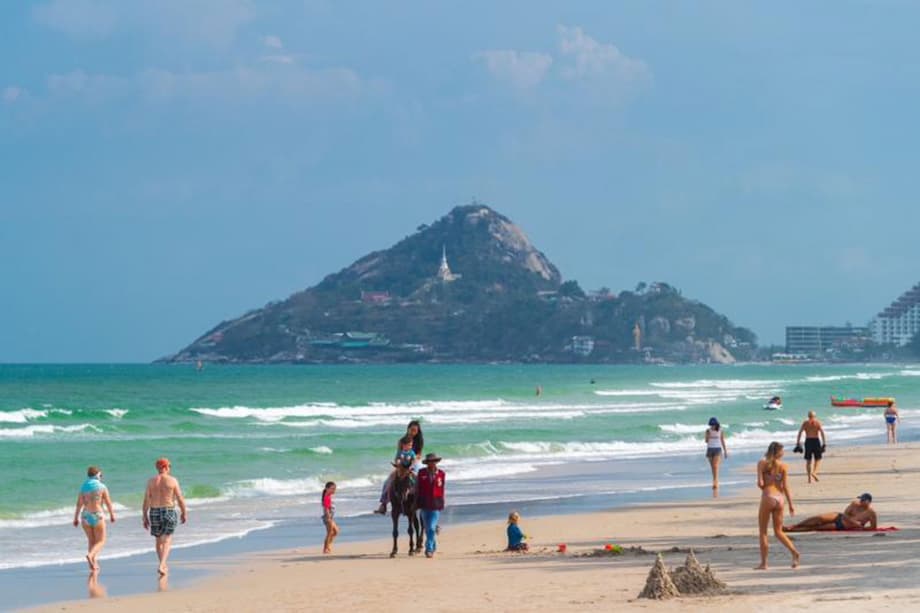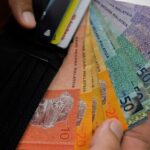Currency strength meets peak travel months
Thailand is heading into the last quarter with its currency near a four year high. That strength helps importers, but it stretches the budgets of foreign visitors. A stronger baht makes every meal, ride and room more expensive in visitors home currencies. The timing is challenging because the cool season from October to March is peak travel for Europe and parts of Asia. Price sensitive independent travelers who have not locked in plans may pivot to cheaper places such as Vietnam, Cambodia or Japan, where a weak yen has delivered exceptional value for several years.
- Currency strength meets peak travel months
- Why a stronger baht deters price sensitive travelers
- Offsets that keep Thailand competitive this season
- Market mix shifts, with Europe holding up and China lagging
- What policymakers can do about the currency and confidence
- Regional winners when Thailand gets pricier
- Scenarios for the high season and what to watch
- The Bottom Line
Tourism operators point to important offsets. International airfares from Europe have dropped from the eye watering prices seen after borders reopened. Nonstop tickets that often reached 70,000 to 80,000 baht in recent years now show ranges near 50,000 to 60,000 baht as airlines add capacity. Contracted room rates signed with tour operators keep prices steady for many long haul bookings. Hoteliers also expect intense competition to hold back rates because the hotel supply is high and demand from some Asian markets is softer. Destinations such as Hua Hin and Cha am forecast fourth quarter occupancy around 70 to 80 percent. Daily rates are expected to rise only about 15 to 20 percent from low season levels, similar to last year.
Behind the seasonal planning sit weaker year to date arrivals. As of early September, Thailand recorded about 22.3 million foreign visits in 2025, down roughly 7 percent from the same period a year earlier, according to industry tallies. Chinese travelers, still the largest single market, reached about 3.16 million during that span, about one third fewer than last year. Travel trade data shared in mid August placed overall arrivals near 20 million and tourism receipts near 938 billion baht, casting doubt on a 1.77 trillion baht full year target. Currency strength is a key part of that picture, alongside safety perceptions and competition across Asia.
Financial regulators are aware of the drag on spending. The Bank of Thailand has said the faster rise of the baht is hurting exporters when they convert foreign earnings, and it will also hit tourism spending. The currency firmed to about 32.2 baht per United States dollar at one point in late September last year, its strongest level in roughly 31 months, after a rally that some officials called the most forceful since the late 1990s. Market watchers also point to a link between gold prices and the baht because Thailand is a major trading hub for bullion, and to broad dollar weakness this year.
Why a stronger baht deters price sensitive travelers
Exchange rates shape travel decisions in simple ways. A visitor who planned to spend the equivalent of 100,000 baht on a family holiday sees that budget shrink in home currency when the baht jumps by 5 to 6 percent. That hit lands across meals, shopping and excursions. It also colors perceptions. Many travelers arrive with a mental price map of Thailand as an affordable destination. When that map no longer matches their experiences, they cut spend or choose another country.
Short haul markets feel it first
The effect is sharpest in short haul markets where trips are planned closer to departure and price comparison is easy. Chinese travelers are a clear example. Operators report that a stronger baht, combined with safety worries, has driven more Chinese families to choose Japan, helped by a weak yen. Data shared by travel industry publications shows Chinese arrivals to Thailand falling by almost one third in 2025. A string of cancellations followed viral social media coverage of crime incidents, which added to the currency headwind.
Media in the region also tracked a drop after a high profile kidnapping of a Chinese actor and new travel advisories. Those stories were widely shared in China, and they pushed some tourists toward Japan and Singapore. Other Asian markets show similar behavior. Arrivals from Malaysia, Thailand’s second largest source, also fell this year. Meanwhile, weekend group tours can fill hotel rooms but tend to leave less time and money for restaurants, nightlife and shopping compared with independent travelers. That pattern is visible in Pattaya, where local businesses report shorter stays and smaller checks as visitors seek better value in Vietnam, Cambodia, India or the Philippines during currency swings.
Offsets that keep Thailand competitive this season
A stronger currency does not erase all of Thailand’s strengths. For many long haul travelers from Europe and North America, flights and rooms booked months ago lock in most costs in advance. The jump in airline capacity has eased ticket prices compared with last year. Carriers have added seats on Europe routes, and that has pulled the average price band lower. Tour operator contracts signed well before the baht strengthened are softening the blow for package buyers.
Air capacity and fares
In the years right after borders reopened, nonstop Europe to Thailand fares sometimes climbed into the 70,000 to 80,000 baht range. This high season, pricing of 50,000 to 60,000 baht is common on many dates, according to agents monitoring the market. The extra seats reflect airlines restoring networks and chasing peak season demand. When planes are less than full, carriers discount, and that brings price points, in baht terms, closer to pre pandemic norms.
Hotel pricing dynamics
Hoteliers are competing aggressively, especially in destinations with rapid new supply. Hua Hin and Cha am expect occupancy of about 70 to 80 percent in the fourth quarter. Room rates are forecast to nudge up by roughly 15 to 20 percent from low season, which is almost unchanged from last year. Thailand’s brand as value for money still resonates because travelers can choose everything from friendly three star properties to luxury resorts in the same town. That variety can also pull domestic travelers who might otherwise look abroad now that foreign trips feel pricier.
Market mix shifts, with Europe holding up and China lagging
This high season is set to lean more on long haul markets. Operators in Hua Hin and Cha am expect core demand from the United Kingdom, Scandinavia, Russia, Switzerland and Germany. Bookings from the United States and Europe have also improved after new exposure from popular culture that spotlighted Thai islands. Those visitors often stay longer and plan further ahead, which reduces sensitivity to currency moves once trips are paid.
Meanwhile, China, South Korea and some Southeast Asian markets are softer. A stronger baht cuts shopping baskets and compresses margins on tours sold in yuan, won or ringgit. Group travel can fill buses and beds but independent travelers tend to generate more spread spending. Cities that rely heavily on group tours, such as Pattaya, feel the difference most when exchange rates turn against visitors.
Spending patterns may change
Businesses should expect shifts within trips as well. If a city break once included two premium dining nights and a shopping spree, a stronger baht often trims that to one special dinner and more value choices. That is why room rates and airfare matter so much. Savings on those big items can free up cash for experiences, even when the currency is strong.
Thailand’s central bank has warned that currency strength weighs directly on visitor spending. Bank of Thailand assistant governor Chayawadee Chai-anant summarized the challenge in a briefing with reporters.
“The stronger baht was impacting exporters when converting profits back to baht, and it would also hit tourism spending.”
What policymakers can do about the currency and confidence
The baht’s rise in 2024 and 2025 has multiple drivers. Dollar weakness, gold flows and foreign buying of Thai bonds have all supported the currency. The Bank of Thailand has said it manages volatility rather than targets a fixed level. Government ministers, including the commerce and finance teams, have urged the central bank to curb wide swings. The central bank has also signaled that expensive currency conditions are a risk to growth in a trade and tourism heavy economy.
Industry leaders want a stable currency and lower financing costs. The Federation of Thai Industries said exporters are struggling to quote prices when the baht moves in a wide range. Hotel groups and chambers of commerce have called for steps that smooth the currency, not a permanent devaluation. The immediate goal is to limit sharp gains during the high season so that visitors do not feel sticker shock.
Kriengkrai Thiennukul, chairman of the Federation of Thai Industries, described how the surge has hit exporters.
“The rapid gains in the baht has made it even worse for exporters. They are exhausted, and it has become harder to survive.”
Deputy Finance Minister Paopoom Rojanasakul argued for balance in exchange rate management.
“Steps should be taken to ensure that the baht is not too weak, or too strong, and most importantly, not too volatile.”
Policy tools that can help tourism in the near term do not rely only on the exchange rate. Visa fee waivers, faster tourist visa processing, and continued air access talks support volumes. A domestic travel co payment program can fill gaps for local operators during soft weeks, although small hotels have asked for quicker reimbursements after delays earlier this year. Health and safety assurance also matter, which is why trade groups have proposed a safe travel stamp for operators who meet higher standards.
On the currency front, the central bank can tamp down short lived surges tied to gold price spikes or speculative flows, and it can keep volatility lower than peers. It also encourages businesses to hedge. None of those measures set the baht at a specific level. They reduce the risk that a rapid leap in the exchange rate disrupts marketing, pricing and traveler sentiment during the most important months of the year.
Regional winners when Thailand gets pricier
Neighbors benefit when Thailand loses some of its value edge. Vietnam, Cambodia and the Philippines have drawn price driven segments during recent currency spikes. Cambodia, which prices most tourism services in United States dollars, has looked particularly attractive to visitors who measure everything in dollar terms. Tourism consultants in Phnom Penh say a firmer baht gives Cambodia an unusual cost advantage, at least until exchange rates shift again.
Travel media describe the on the ground effect in Thai beach cities. In Pattaya, hotels report shorter stays and restaurants see lower checks as visitors choose cheaper options or switch destinations. That strain is toughest for smaller businesses that relied on independent travelers and now face more group tours with tighter budgets. The trend does not erase Pattaya’s appeal, but it forces operators to adapt pricing and packages to protect occupancy without eroding margins.
Scenarios for the high season and what to watch
Several paths are possible for the coming months. If the baht settles in a 32.5 to 33 range against the United States dollar, airlines keep capacity high and hotels resist big rate hikes, Thailand can still attract strong long haul demand while coaxing cautious travelers from Asia with deals. If the baht moves closer to 31, the currency effect will take a bigger bite out of budgets for visitors from China, South Korea and Malaysia, and retailers will feel it fastest.
Watch a few indicators to gauge the season. Exchange rate moves of even 1 baht per dollar can nudge behavior, especially for last minute trips. Airfare trends on Europe routes will show whether capacity remains ample. Hotel load factors in beach towns such as Phuket, Hua Hin and Pattaya will reveal the strength of late bookings. Chinese search and booking data will tell whether safety messages are resonating. The policy calendar also matters, including any new steps from the Bank of Thailand to limit wide currency swings.
The Bottom Line
- The baht is near a four year high, trimming foreign tourists’ purchasing power as the high season approaches.
- Independent travelers in Asia are the most price sensitive, and Chinese arrivals are down by about one third in 2025.
- Cheaper airfares and competitive hotel pricing are offsetting currency pressure, with Hua Hin and Cha am expecting 70 to 80 percent occupancy and modest rate gains from low season.
- The Bank of Thailand says a strong baht will hit tourism spending, while business groups urge steps to reduce volatility rather than target a fixed level.
- Pattaya and other beach cities report shorter stays and smaller checks as groups replace higher spending independent travelers.
- Vietnam, Cambodia and the Philippines are capturing some value seekers while the baht stays firm.
- Key signals to monitor include the exchange rate range, Europe airfare trends, beach town occupancy and the pace of recovery in China bookings.




